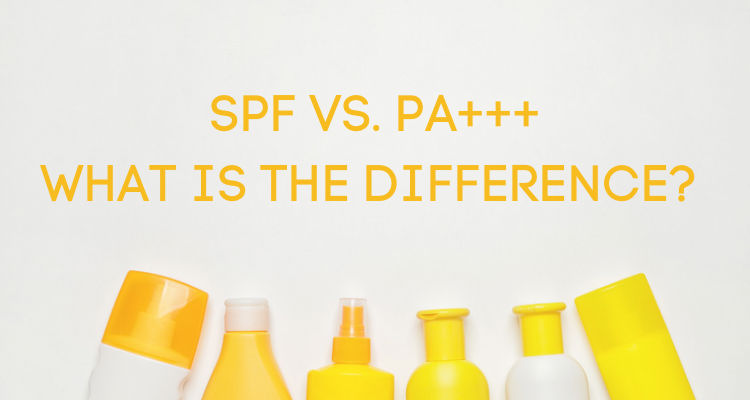Understanding the nuances of sun protection is crucial for skin health, and this begins with deciphering sunscreen labels. SPF, or Sun Protection Factor, quantifies defense against UVB rays, known for causing sunburn. Conversely, PA, standing for Protection Grade of UVA, assesses shielding from UVA rays, which penetrate deeply to accelerate aging. This introduction aims to unravel these labeling systems, underscoring the significance of comprehensive sun defense by considering both SPF and PA ratings, ensuring readers can make informed choices for their skin's safeguarding against the sun's multifaceted harm.
Check our post on the difference between UVA and UVB rays for more details.
Key Takeaways:
|
1. What does the SPF factor mean on Sunscreen Labels?
The SPF label on sunscreens stands for Sun Protection Factor. It measures the level of protection the sunscreen offers against UVB rays, which are the short-wavelength UV rays primarily responsible for sunburn and can contribute to skin cancer. The SPF number indicates how much longer a person can be exposed to the sun without getting sunburned compared to unprotected skin. For example, an SPF of 50 means you could theoretically stay in the sun 50 times longer than without protection. However, this is an approximation and varies based on skin type, intensity of sunlight, and application of the sunscreen. Regardless of which SPF you use, you must still reapply an adequate amount of sunscreen every 2 hours or after sweating.
What does the Broad Spectrum Label mean?
"Broad spectrum" on an SPF label indicates the sunscreen offers protection against both UVA and UVB rays. UVB rays are primarily responsible for sunburn and skin cancer, while UVA rays can penetrate deeper into the skin, causing photoaging and contributing to skin cancer risk. Broad-spectrum sunscreens provide a more comprehensive shield against the sun's harmful effects, helping to prevent sunburn, reduce the risk of skin cancer, and minimize premature skin aging.
2. What is the PA rating system?
The PA rating system, which stands for "Protection Grade of UVA," is used to indicate the level of protection a sunscreen provides against UVA rays. Originating in Japan, this system rates protection with a "+" system, ranging from PA+ to PA++++. Each "+" signifies a higher level of UVA protection, with PA++++ offering the highest. This system complements SPF (Sun Protection Factor), which measures protection against UVB rays, offering a complete understanding of a sunscreen's protective capabilities against the sun's harmful effects.
3. What is the SPF equivalent to PA rating?
| SPF Broad-Spectrum (UVB) | PA Rating (UVA) |
| SPF 15 | PA+ |
| SPF 30 | PA++ |
| SPF 50 | PA+++ |
| SPF 50+ | PA++++ |
*Please note that this table provides a basic approximation and there is no direct, universally agreed-upon conversion between broad-spectrum SPF and PA ratings, as they measure different aspects of sun protection. Always refer to the labeling on the product for the specific SPF and PA ratings to get accurate information about the level of protection offered.
4. What is the U.S. regulation on labeling protection factors on sunscreens?
In the United States, the concept of broad-spectrum protection holds significant prominence in the realm of sunscreen regulation. This is primarily due to the regulations set forth by the Food and Drug Administration (FDA), the authoritative body responsible for overseeing the safety and efficacy of consumer products, including sunscreens. The FDA mandates that for a sunscreen product to be labeled as "broad-spectrum," it must demonstrate proficiency in shielding the skin from both UVA and UVB rays. This regulatory focus on comprehensive protection stems from the widespread prevalence of UVA and UVB radiation in the U.S. sunlight exposure. As indicated by the Surgeon General's Call to Action to Prevent Skin Cancer, both types of rays pose considerable health risks, necessitating a dual-layered defense strategy. To this end, the FDA's rules ensure that consumers are equipped with sunscreens capable of offering well-rounded protection against the diverse spectrum of solar radiation.
During the process of selecting an apt sunscreen, it's pivotal to ensure its alignment with the dual requisites of broad-spectrum defense and a substantial UVA protective index, under the recommendations outlined by the respective region or country.
How Should a Good Sunscreen Be?
Sources:
U.S. Food and Drug Administration (FDA). (2019). Sunscreen: How to Help Protect Your Skin from the Sun. [https://www.fda.gov/consumers/consumer-updates/sunscreen-how-help-protect-your-skin-sun]
Office of the Surgeon General. (2014). The Surgeon General's Call to Action to Prevent Skin Cancer. [https://www.ncbi.nlm.nih.gov/books/NBK247684/]




Share Your Opinion, Please